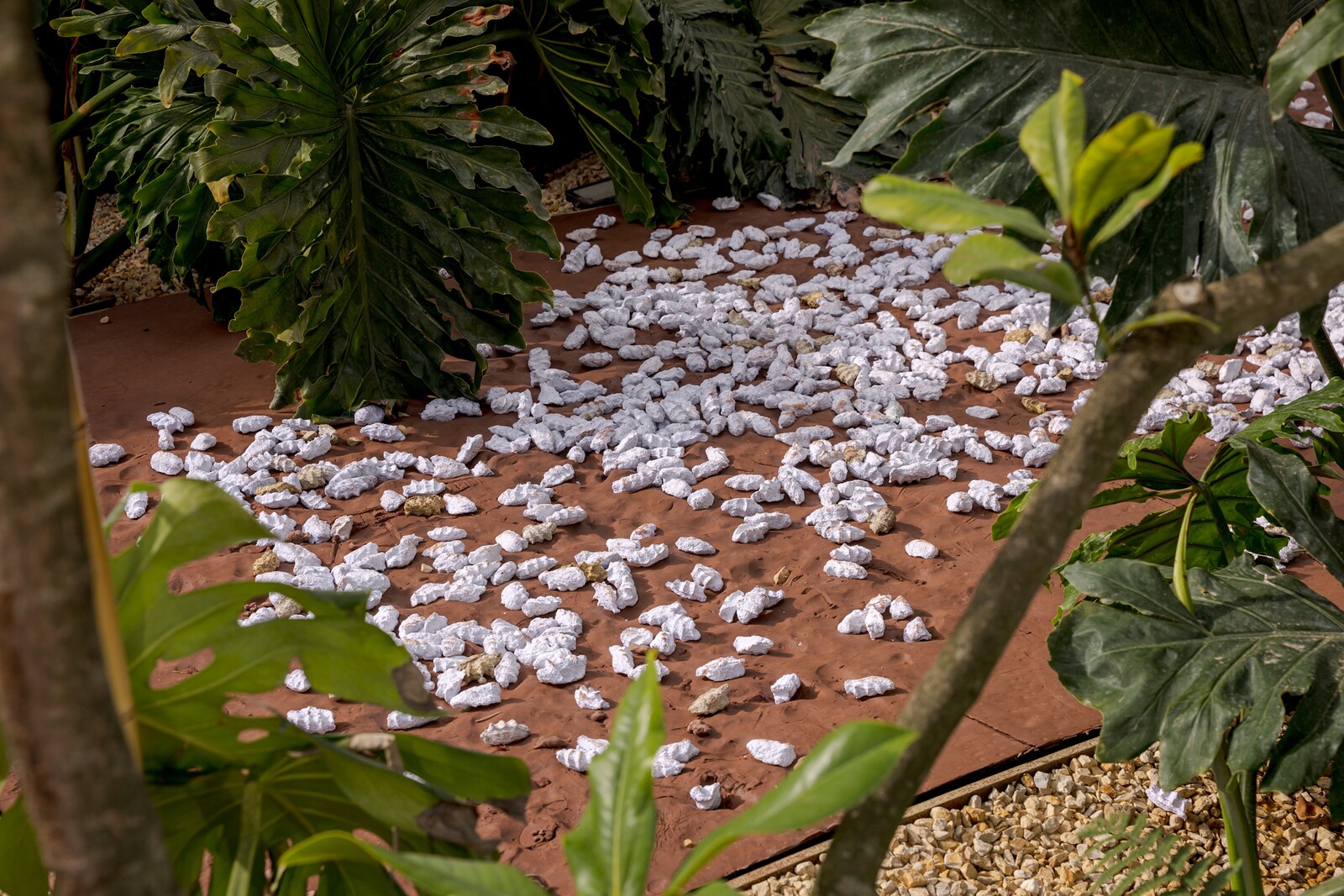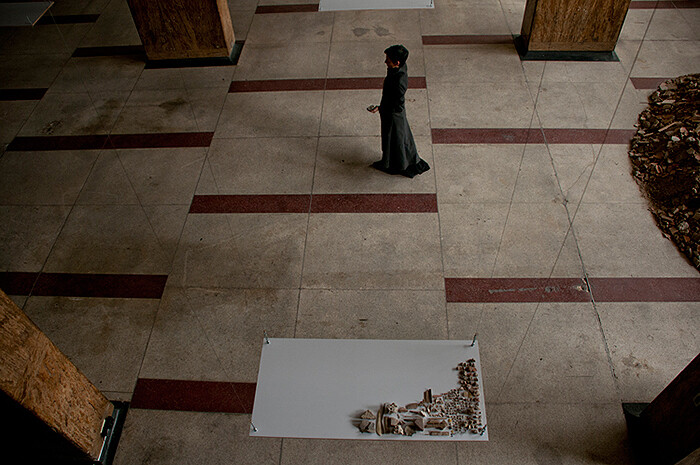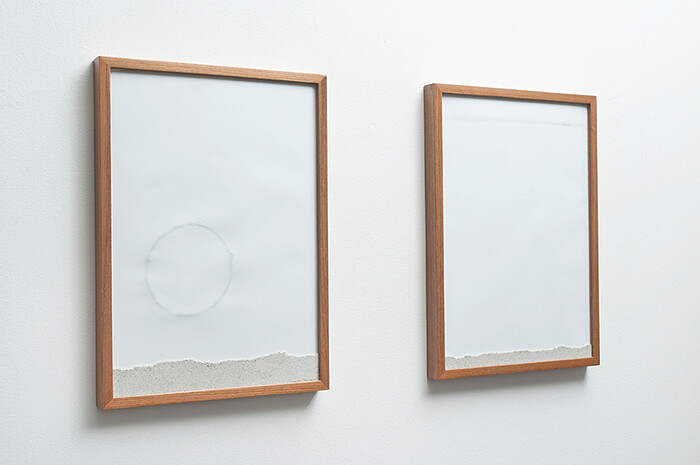Categories
Subjects
Authors
Artists
Venues
Locations
Calendar
Filter
Done
April 29, 2025 – Review
“La madre, las palabras con los nombres, un sorbo y cuatro rayos”
Kim Córdova

How do we move beyond histories that no longer fully represent us? The 2016 peace agreement with the FARC, which brought to an end roughly fifty years of war between the Colombian government and left-wing militia groups, stipulated three monuments to be built from the militias’ surrendered weapons and munitions. Doris Salcedo’s commemorative monument in Bogotá—a commission from the Colombian Ministry of Culture—inverted and expanded the idea of heroism usually accorded to monuments. She designed a cast iron floor made from thirty-seven tons of melted-down weapons that were cast in molds hammered into shape by women victims of sexual violence by guerrillas during the conflict.
This anti-monument was installed in a new cultural center—Fragmentos Espacio de Arte y Memoria—in the retrofitted ruins of a house from 1565 in Bogotá’s La Candelaria neighborhood. The center follows the example of local leaders, including former Bogotá mayor and social practice artist Antanas Mockus, in its aim: to fuse art and policy and bring publics together to process the trauma of decades of war. At Fragmentos, curator Carolina Cerón gathers pieces by five Colombian artists—Mónica Restrepo, Ana María Montenegro, María Leguizamo, David Medina, and María Isabel Arango—whose work “bridges past and present.” The …
December 2, 2013 – Review
María José Arjona’s “… pero yo soy el tigre”
Sophie Goltz

Who’s the tiger?
In 2012, the Wall Street Journal headed a report on the emerging economies of Colombia and Peru with the bold headline, “The New Tigers,” pitting them against the Asian “Tigers” of the 1960s–90s. Already projected to become the third largest economy in Latin America by 2014, Colombia is a country particularly rich in raw materials—including oil, coal, and gold—and it is one of the largest exporters of coffee worldwide. The streets of its capital city of Bogotá are often characterized either by slow-moving traffic or absolute gridlock, reflecting the ubiquitous, post-traumatic effect its repressive political policy imposes on the rituals of daily life.
Launched concurrently with artBO, the International Art Fair Bogotá (which recently celebrated its ninth installment from October 25–28, 2013), the up-and-coming Parisian galerie mor ∙ charpentier initiated María José Arjona’s continuous, four-week performance …pero yo soy el tigre (…but I am the tiger, 2013), which was curated by Eugenio Viola, as the inaugural event of their new branch in Bogotá. Since its founding in 2010, mor ∙ charpentier has primarily focused on artists from Latin America and its diaspora—such as Milena Bonilla, Maria Elvira Escallón, and Oscar Muñoz from Colombia; Teresa Margolles and Yoshua Okón from …
December 18, 2011 – Review
”Des(enho)” Marilá Dardot, Marcius Galan, Nicolás Paris, Gabriel Sierra, Carla Zaccagnini
Mariangela Méndez

Drawing is most itself when other than itself. The exhibition “Des(enho)” ventures beyond drawing by locating the very act (its gesture) in the context of a larger domain: mark-making, mapping, transposing, translating. This list of verbs is not accidental; the exhibition renders acts, actions, activities, rather than objects. Rodrigo Moura, in his brief curatorial statement paraphrasing Rosalind Krauss, proposes the occurrence of “drawing in the expanded field,” a kind of diffusion or invasion of drawing practices into other media. Consequently, the exhibition focuses on works where drawing insists on its own presence—not necessarily as a medium but as a concept, gesture, metaphor.
Territorial expansions are precarious and hazardous undertakings. Take photography, for instance, some decades ago: there was an extraordinary expansion and dispersion of the field that gradually yielded to a kind of disruptive dissolution. Or to put it more candidly: there are limitless answers to the question, “what is drawing?”. But will the plethora of possibilities blunt the question, eventually leading towards a conceptual quagmire?
Through a conceptually generous selection of works from five artists, the exhibition offers a series of dialogues with the concept of drawing. Marcius Galan’s Drawing a Line (2011) gives us attentive records—or translations—of the most elementary …